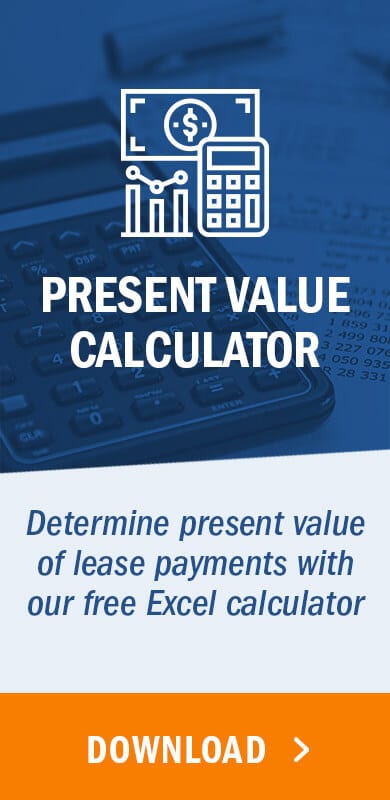Public business entities have completed their transition to the new lease accounting standard, ASC Topic 842 Leases (ASC 842) and now have several years of compliance with the new guidance under their belt. Additionally, any non-public business entities that have not completed their transition to ASC 842 are working towards compliance for their 2022 fiscal year and looking ahead to a time when the new lease accounting treatment is routine.
The entities in either scenario, however, are probably not thinking about the impact the changes to lease accounting will have on any future business combinations. In this article, we’ll explore the interaction of lease accounting and ASC Topic 805 Business Combinations (ASC 805), as well as how to properly account for leases in a business combination.
Accounting for a business combination
ASC 805 Business Combinations (ASC 805) is the US GAAP guidance for accounting for mergers and acquisitions. At a high level, the standard defines a business combination, including criteria for both the transaction to qualify as a business combination and determining whether an entity is a business, and then walks through how to account for the transaction.
Some specific transactions, such as the formation of a joint venture or the purchase of a non-entity group of assets, are not within the scope of ASC 805. For those transactions within the scope of ASC 805, the standard requires a business combination to be accounted for by the acquisition method and then describes the acquisition method in the following steps:
- Identify the buyer.
- Determine the acquisition date.
- Calculate the value of and record the identifiable assets acquired, liabilities assumed, and any non-controlling interest in the acquiree.
- Calculate and record goodwill, if appropriate.
The above is a simplified summary of how to account for a business combination. Like much of the current accounting guidance, the application of the acquisition method can quickly become complex based on the circumstances of each transaction. Additional guidance is provided for the accounting treatment of specific types of accounts outside of general assets and liabilities, such as leases and pensions and other postretirement benefit plans.
The accounting treatment of a contract containing a lease obtained in a business combination depends on several criteria, as well as whether the buyer has adopted the new lease accounting standard, ASC 842. Below, we will outline appropriate accounting treatment under both ASC 840 and ASC 842 and the accounting treatment for any lease-related intangible assets and liabilities during the transition from ASC 840 to ASC 842.
Favorable and unfavorable leases
Favorable and unfavorable leases are associated with business combinations and relate to leases acquired or assumed by the buyer. The favorability of a lease is determined from the buyer’s point of view and designates a lease whose rental rates are above or below market value, or off-market. A favorable lease represents an asset to the buyer, whereas an unfavorable lease represents a liability to the buyer.
Leases obtained in a business combination under ASC 840
For a lease obtained in a business combination that is unchanged as a result of the business combination, the buyer will use the lease classification in place as of the acquisition. However, if the lease is modified as part of the business combination, the buyer will reanalyze the classification of the lease under ASC 840 using the new lease terms and conditions.
ASC 805 provides guidance for acquired entities as lessee and lessor and operating and capital leases.
Acquired entity is the lessee
If the acquired entity is the lessee in an operating lease agreement, the buyer shall not record a lease asset or lease liability in keeping with ASC 840. However, the buyer shall record any leasehold improvements owned by the lessee at fair value and/or an intangible asset or liability for favorable or unfavorable lease terms, respectively. Any recorded leasehold improvements or intangible assets or liabilities are amortized over the lease term. Furthermore, the determination of the value associated with any favorable or unfavorable lease terms is part of the purchase price allocation process.
If the acquired entity is the lessee in a capital lease agreement, the buyer recognizes a capital lease asset and capital lease liability measured at fair value as of the acquisition date. When valuing the capital lease asset, the buyer shall consider whether or not they intend to own the leased property at the end of the lease term.
If the buyer intends to own the underlying asset at the end of the lease term, the capital asset shall be recorded at its fair value. Conversely, if the buyer does not intend to own the underlying asset at the end of the lease, it would record a capital asset equivalent to the fair value of the right to use the underlying asset.
In either scenario, the buyer also records any leasehold improvements owned by the acquired entity at their fair value as of the acquisition date and any appropriate intangible asset or liability for favorable or unfavorable lease terms.
Acquired entity is the lessor
In instances where the acquired entity is the lessor of an operating lease, the facts and circumstances of the lease agreement do not impact the value of the leased asset recorded by the buyer. The buyer will record the leased asset as a fixed asset at its fair value as of the acquisition date. The buyer may also record any leasehold improvements owned by the acquired entity at fair value and/or an intangible asset or liability for favorable or unfavorable lease terms, respectively.
If the acquired entity is the lessor of a sales-type or direct financing lease, the buyer is required to record its net investment in the lease at fair value as of the acquisition date. Any applicable off-market adjustments are captured in the net investment, and not in a separate asset or liability. However, the buyer may record any leasehold improvements owned by the acquired entity at fair value.
Leases obtained in a business combination under ASC 842
Similar to the accounting treatment under ASC 840, for any lease obtained in a business combination that is unchanged as a result of the business combination, the buyer will use the lease classification in place as of the acquisition. However, if the lease is updated as part of the business combination and meets the criteria for a modification under ASC 842, the buyer will reanalyze the classification of the lease using the new lease terms and conditions.
Whether the acquired entity is the lessee or the lessor and whether the lease is an operating or finance lease all have bearing on the accounting treatment of the lease and recognition of any assets or liabilities related to the lease.
In the scenario when the acquiree has not adopted ASC 842 but the buyer has, the buyer would reassess the lease classification of all acquired lease agreements as both a lessee and a lessor.
Acquired entity is the lessee
If the acquired entity is the lessee in an operating or finance lease agreement under ASC 842, the buyer shall record a lease liability and right of use (ROU) asset. The lease liability shall be measured as the present value of the remaining lease payments for the buyer, using the buyer’s expectations for renewals, purchase options, and terminations.
The ROU asset is measured as the buyer’s lease liability plus or minus any adjustments for favorable or unfavorable lease terms compared to the market. Therefore when adjusting for a favorable lease, the ROU asset value is increased and when adjusting for an unfavorable lease, the ROU asset value is decreased. The favorable/unfavorable lease term adjustments are then amortized as part of the ROU asset amortization under ASC 842. The buyer would also record any lessee-owned lease improvements at fair value.
As a practical expedient under ASC 842, the buyer has the option to elect to expense any lease with a remaining lease term of 12 months or less as of the acquisition date when the acquired entity is the lessee. This election also extends to any off-market adjustments. The buyer is not required to calculate an asset or liability related to favorability for any lease with a remaining term of 12 months or less at the acquisition date. Additionally, this exception must be applied as a policy election by class of underlying asset.
Acquired entity is the lessor
Similar to the accounting treatment under ASC 840, in instances where the acquired entity is the lessor of an operating lease, the facts and circumstances of the lease agreement do not impact the value of the underlying leased asset. It will be recorded by the buyer as a fixed asset at its fair value as of the acquisition date. The buyer may also record any leasehold improvements owned by the acquired entity at fair value and/or an intangible asset or liability for favorable or unfavorable lease terms, respectively.
If the acquired entity is the lessor of a sales-type or direct financing lease, the buyer is required to record their net investment which consists of
- a lease receivable using the buyer’s facts and circumstances as if it were a new lease as of the acquisition date, and
- an unguaranteed residual asset that represents the difference between the fair value of the underlying asset and the carrying value of the lease receivable,
both as of the acquisition date. Therefore, any applicable off-market adjustments are captured in the net investment, and not in a separate asset or liability. However, the buyer may record any leasehold improvements owned by the acquired entity at fair value.
Transitioning leases obtained in a business combination under ASC 840 to ASC 842
The last accounting treatment we will address is the transition of leases obtained in a business combination under ASC 840 to ASC 842. The transition treatment of previously acquired leases is essentially the same as all other leases in the entity’s portfolio. All acquired operating leases for which the entity acts as a lessee will now be recorded on the balance sheet through the recognition of a lease liability and related ROU asset. Additionally under ASC 842, any intangible assets or liabilities previously recognized in accordance with ASC 805 related to favorable or unfavorable terms of a lease for which an entity is a lessee are recognized as adjustments to the related ROU assets by the buyer.
If the lessee has previously recorded a favorable lease intangible (asset), the entity should derecognize the intangible asset and add an offsetting amount to the ROU asset when adopting ASC 842. If a lessee has previously recorded an unfavorable lease intangible (liability), the entity should derecognize the liability and reduce the ROU asset by the same amount when adopting ASC 842. This applies to both operating and finance type leases which may have had associated lease intangibles recognized under ASC 840.
Summary
The accounting treatment of a lease acquired or assumed in a business combination is covered by both ASC 805 Business Combinations and the lease accounting standards. The updates to lease accounting also impact how the lease is accounted for in a business combination. Other factors which affect how a lease is accounted for in a business combination include lease classification, relationship to the lease agreement, and favorability of the lease terms as compared to the market.



